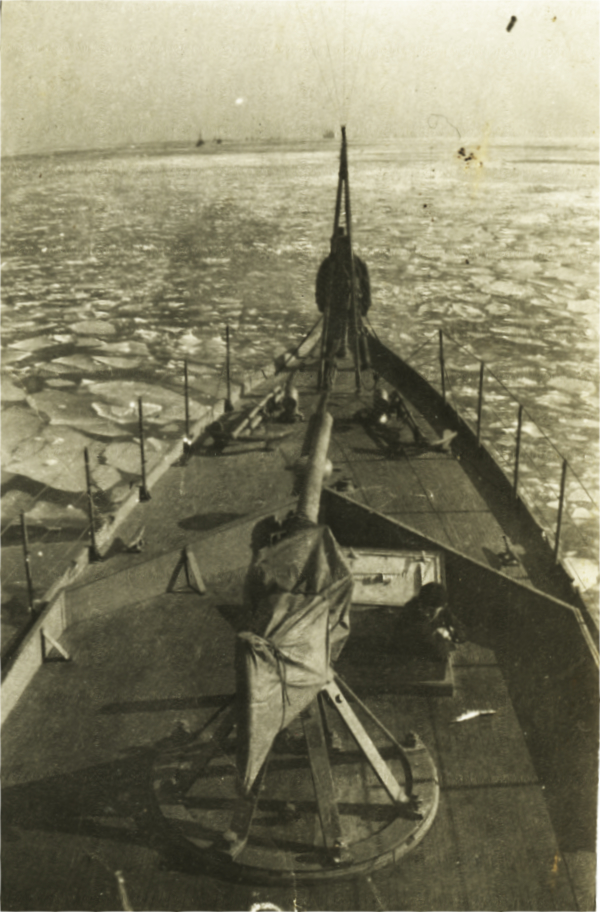Commissioned on 24 December, 1917 at New York, SC 227 would be assigned to serve on the Otranto Barrage (Base 25, Corfu, Greece). But early in the year, as the new officers and crews were learning about this new type of USN vessel, simply getting from point A to point B could be a challenge. Selections from a letter home from CO George P. Morse dated January 20 tells the story of a group of chasers ordered to move from New York to Norfolk, VA:
Monday at 9:00 AM we left NYC. The harbor was thick with ice as far as Ambrose Light Ship. We left without our Chief Machinist. At the light ship we had temporary engine trouble, and were fixed in ten minutes. Half the crew were sick.

We go into a formation and headed south. A sea-going tug was detailed to follow up behind. The day passed abright. One or two boats had engine trouble but nothing serious. Jenning turned in a eighht PM and I took the 12 to 4 watch. At about 8:00 p.m. the boatrs went in a wild goose chase looking like a lot of sheep -- if you can imagine that. At two o'clock the glass began to fall, and you know what that means.
At 3 o'clock a good southwester struck us. The rain came down in sheets and the wind blew a 70 mile gale. One ligjht from the other boats was visible now and then. In an hour the waves were coming over our bow hitting the water guard on the deck and flying in the pilot house (the open window) like a stream of water. The propellers would come out of the water and the engine would race. I never was in such a roll in my short experience.
At daybreak I headed southwest and I saw a SC a few miles ahead of us. The storm broke at sunrise. We were in sight of land and the su shone The wind had changed to southeast and offshore. But what shore we had not the least idea. We had no charts. Here is where we had some more fun.
Just as we sighted the fleet, or I should say, about 5 SC boats, our engines stopped dead. My good old 1 at MM worked for a half hour but was so sick he could not stand up. He went to bed. I found tht I was in 15 feet of water so dropped anchor. Remember the wind was blowing off shore and there was a heavy sea.
At noon they fired the engines, but we could not navigate without charts. But we hoisted anchor. My BM, two men that were not so sick and myself. It took two hours. And I pulled within a mile from shore and land there ok (5 ft. of water). At night a Coast Guard station blinked to us. We asked where we were and sent a message to Norfolk Yard, which they never got.
While we were at anchor that day the SC 224 came within hail. She was out of gas and was looking for the nearest port. ... The Coast Guard station told us that we were 14 miles from Asasatigne Light. Well I looked that up and found that we were in Va. 92 miles north of Norfolk. The next day could not have been better. The Coast Guard, 8 of them, came to us and they had a "picknick" good time, and we stayed there alongside a fish factory all night. During the night 224 came alongside and the next morning we all (tug, 227, 224) went to Norfolk.
Letter from George P. Morse to "Mother, Dad, & Stanley," from USSC 227, January 20 (1918). Photo: Chaser leaving icy harbor. Courtesy of the estate of Elizabeth Morse Atwood.
In coming months they would prepare for a journey and a tour of dury that must have made that trip to Norfolk look easy by comparison: They would cross the Atlantic Ocean on their own power, in a 110-foot wooden submarine chaser, and hunt U-boats in the mouth of the Adriatic Sea, until in November of that year, 105 years ago this month, they would celebrate the Armistice.
-- Todd Woofenden, editor
